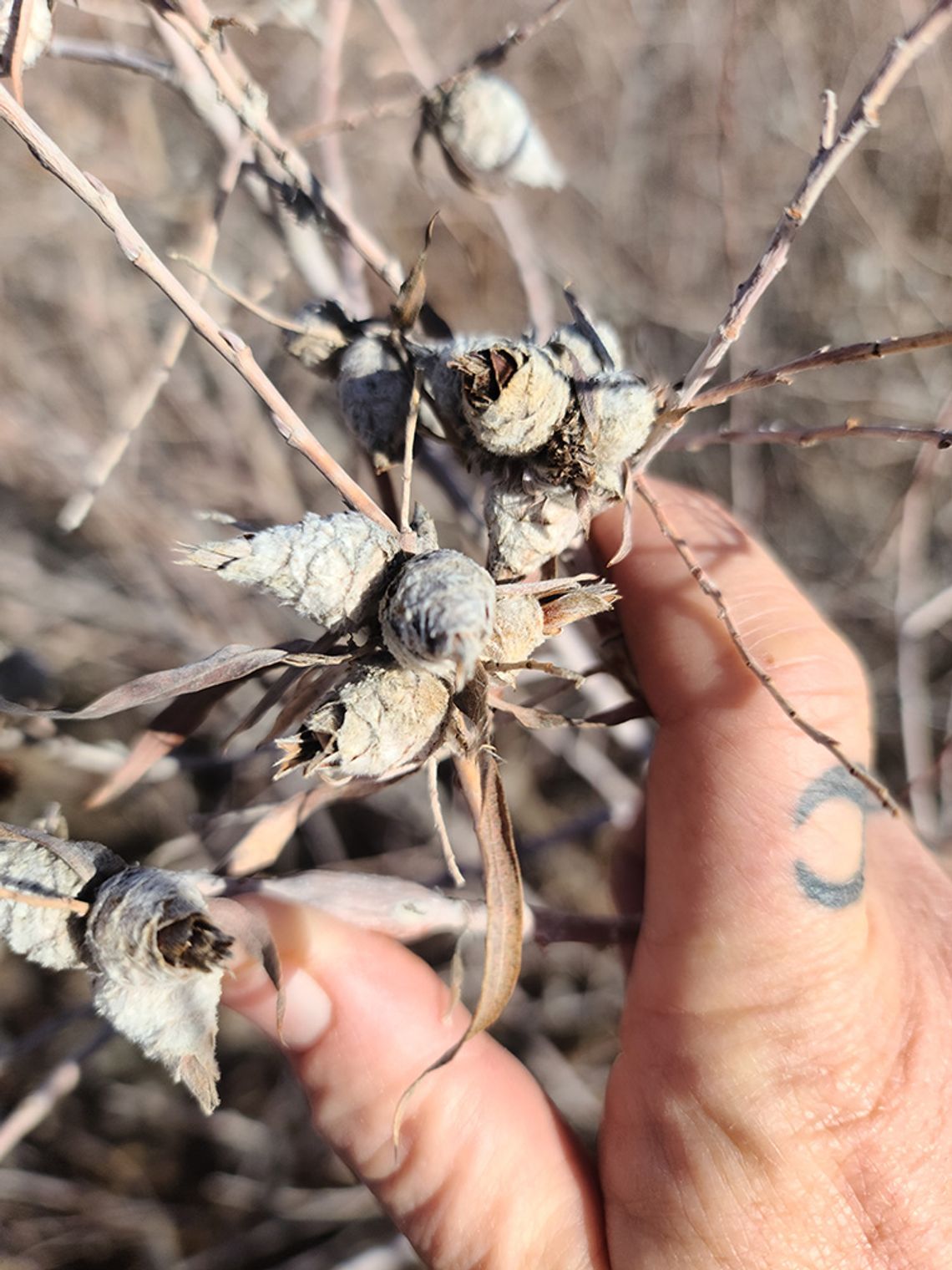When you think of a willow, most people think of the bright green globe or of the weeping willow tree, or perhaps even the soft catkins of pussy willow shrub that you find in Easter bouquets. Extra points for the Harry Potter fans that thought first of the Whomping Willow. Salix, pronounced SAY-liks, is a Genus of over 350ish trees and shrubs. In general, willow prefer full sun and moist soils. They typically are mostly found in colder regions. They are especially numerous and native to the Northern parts of the US. One exception is Salix exigua, commonly called coyote willow or sandbar willow. Exigua is Latin for short, probably a reference to the plant’s height, normally a few meters tall but up to 10 when happy. You can find dense thickets along riparian environments and other waterways from Alaska to Northern Mexico. You can also find them here in Fallon.
Willows are exceedingly useful. They are sources of nectar and early pollen for many bees and other insects. They are frequently planted along the banks of toxic or contaminated waterways to help filter the polluted water. Willows are highly efficient at bank stabilization, erosion control and are commonly used in habitat restoration projects. The plants have numerous medicinal uses and other ethnobotanical importance (basketry, deerskin dye, and fish traps to name a few), especially in Native American groups. They are also an important food source for various wildlife, especially moose, elk, and beavers.
The Coyote Willows on our property are home to an abundance of wild residents. They are a host plant for the viceroy butterfly and a zillion tiny birds. I hear noisy wrens and finches in ours all the time. This season they hosted an occasional muskrat and for a short time a coyote or two. Our Pyrenees pup, Lucy, doesn’t let them hang out for very long. If you take a winter stroll along a waterway you might notice the Coyote Willows have pretty, pinecone-looking clusters on the ends of the branches right now. I usually make wreaths from young reddish-colored, pliable branches but especially because of the cute little “pinecones.” It took a few years before I decided to find out what they were. I always assumed they were the seed head. Turns out it is the winter cocoon of a willow cone gall or midge. If you dissect one you might find the tiny white larvae of a tiny fly. In early spring the larvae make minute bites on the ends of Coyote Willow branches. The salivary secretions from the bites cause the branch to stop elongating but the bud continues to grow because of higher hormone production. This process makes essentially a pinecone-looking, concentrated leaf house for the developing larvae to stay toasty in through the winter. Before you reach for your insecticides, know that galls occur all over the plant kingdom and do very little harm to the host. Less harm and more charm in this case. Call your local arborist if you are overly concerned. Treatment, if necessary, has to be timed perfectly as once the gall starts to form, it’s too late. Horticulture oil could be helpful if used in late winter.
In our yard, we also have oak galls. They look like tiny red, Lifesaver candies stuck to the leaf undersides of our Valley Oak. Cottonwoods also get a gall that looks like a large green pea or bean at the base of the leaf. Some galls are caused by viruses, bacteria, or mites. Aphids, plant lice, or wasps are other gall constructors. There are leaf galls, stem galls, or bud/flower galls. The slightly parasitic, slightly mutualistic relationship between the “bug” and the host is a pretty specific one. Don’t expect an oak gall on all your other trees.
I promise, most gall damage is only cosmetic. Part of the natural cycle of our natural world. Speaking of the natural cycle, the Winter Solstice is behind us. 88 days until spring!









Comment
Comments